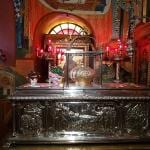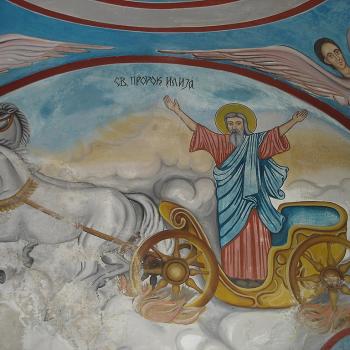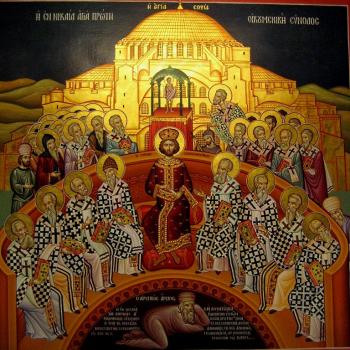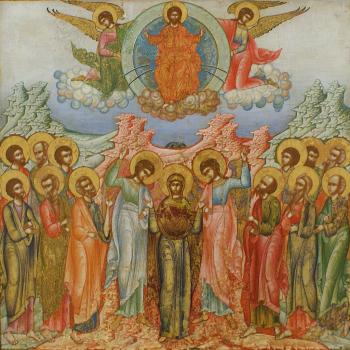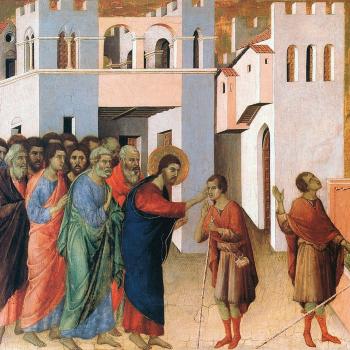
Dante’s Divine Comedy presents to the modern reader a cosmology which is radically different from our own. Many people today read it as a work of fiction, and consider the cosmology itself to be a construct created by Dante himself. They say we should not read it theologically, as if it indicated anything about Christian notions of the afterlife. While there is, to be sure, an element of truth to that caveat, it is also true that he took on and accepted the general medieval eschatological paradigm and used it to create his own presentation of heaven, purgatory, and hell. Indeed, this becomes very clear when one reads medieval theologians like St. Albert the Great, for there, one finds a cosmology which is similar to that found in Dante (though, often without the details Dante used to describe the various realms of the afterlife).
For St. Albert, heaven, hell, purgatory and limbo were actual physical places, not only found in the cosmos, but connected to the Earth. He followed a Ptolemaic cosmology with the Earth at the center of creation. This allowed him to say that hell exists at the “heart” of the Earth, and heaven being found in the space beyond the Earth. “We say that hell is in the heart of the earth, just as the holy fathers say.” [1] All that is ignoble and painful finds its proper place in hell, so that both the painful heat of fire, and the dread cold of ice, are both found there:[2] “To the next, one must reply that of all the elements, the ignoble will descend to hell, as we said above, and cold will exist in parts of the elements, and heat will exist in other parts, as in a subject.” [3] Likewise, then, hell contains all that is abhorrent, from the darkness in which no light shines, to the fact that it becomes the place in which all the excrement expelled by the creatures of the Earth finds its rest:
To these [queries] and others like them we respond that in the place called hell there is a threefold punishment beyond those [punishments] enumerated above; and [we respond] that, apart from the interior hell, the exterior hell has these three punishments, namely [1] a darkness that is the absence of both [spiritual and corporeal] light, and [2] an abhorrence for the place because that place is an abyss into which the excrement of all creatures descends at the renewal of the world, and [3] the stench of the [evil] community. [4]
Between hell and purgatory lay limbo, both the limbo of the fathers and the limbo of the infants. The limbo of the fathers is temporary, because it is the place in which the holy dead went before the advent of Christ. The limbo of the infants is permanent, as it is the place of those infants who have no personal merit or demerit go as a result of original sin[5]:
We say that the limbo of the fathers is close to hell, just as the Creed says, and it is the border of hell joined to the limbo of infants. The distance of which the Gospel speaks, however, is understood with respect to the distance of merit and of consolation, and also the place is higher than hell with respect to the damned. [6]
When it was asked where Jesus went at the time of his death, St. Albert indicated we must take the various creeds seriously when they say he descended into hell. This means, contrary to what some might suggest, he did not only go to the limbo of the fathers:
To the contrary: Christ descended to hell, as both the Apostle’s Creed and the Athanasian Creed say, and it follows that he did not descend only to limbo for, as the Damascene says, “the deified soul descended to hell.” [7]
While many theologians argue Jesus only descended to the limbo of the fathers, because his soul is just, there is sufficient tradition to suggest that in and through his kenosis, he went to the very edge of being itself, to the edge of creation, and so to the lowest “pits of hell.” For, this way, the omnipresence of God can be seen in and through the incarnate one, so throughout hell, God can be said to be found (cf. Ps. 139:8). God is there because of Jesus’ descent into hell, fulfilling what Christians believed were prophesized about him through the Psalms. Certainly, various theologians, like Hans Urs von Balthasar, have suggested other reasons for a descent into the depths of hell, such as the idea that the God-man will take all of creation into account through his descent, allowing things to circumscribed by journey, leaving nothing outside of his dominion. Nonetheless, what is important here is to note that St. Albert did not believe the creeds suggested Jesus only went to the limbo of the fathers, but rather, to hell itself. Those who would condemn such a theological notion, denying its place in tradition, must explore the tradition further, otherwise, they will end up condemning perfectly sound and orthodox thinkers like St. Albert the Great (who is, after all, a Doctor of the Church).
Our own scientific knowledge shows us many of the faults and weaknesses of the medieval cosmological model. We no longer think of hell as being a physical place underneath the Earth’s crust. We do not look up into the sky and consider what lies beyond the Earth’s atmosphere is the abode of the blessed. We have gone out into space. We have landed on the moon. However, if we truly want to understand Dante, if we want to appreciate his work, we would do well to read medieval theological texts and come to grips with a model which is different from our own. In doing so, we might learn something, not because we will agree with the model, but because much of what is said using the model does not rely upon the model itself. We will find that not everything has changed. The key concepts remain. However, elements which were acknowledged, such that there is not only an exterior hell, but also an interior hell, will become much more important as we realize the extent that the real suffering of hell comes from ourselves, from our own spiritual condition, and not the external world. We do not have to look for hell as a place in the way medieval theologians did. Similarly, we should emphasize the interior state of heaven, so we do not confuse space as the place of the blessed. This is not to say that creation will not have a place in eternity – it will, the Earth and all that is on it, even as the heavens in the sky, will have a place in eternity, not divided up into parts, where some is said to be the place in which hell exists, and others the place in which the kingdom of heaven is found; rather, all of it will be found in the kingdom of God. Perdition and beatitude are better described as states, not places. For it is the states, the interior condition, and not the places, which are significant.
[1] St. Albert the Great, On Resurrection. Trans. Irven M. Resnick and Franklin T. Harkins (Washington, DC: CUA Press, 2020), 221.
[2] It’s not difficult to see how connects with Dante’s vision of hell, which has both fire and ice found within it.
[3] St. Albert the Great, On Resurrection, 202.
[4] St. Albert the Great, On Resurrection,, 222-3.
[5] Current theological trends reject the need for the limbo of the infants and find many ways in which infants could receive the grace they need in order to overcome the defect of original sin.
[6] St. Albert the Great, On Resurrection, 237-8.
[7] St. Albert the Great, On Resurrection, 237.
Stay in touch! Like A Little Bit of Nothing on Facebook.
If you liked what you read, please consider sharing it with your friends and family!



